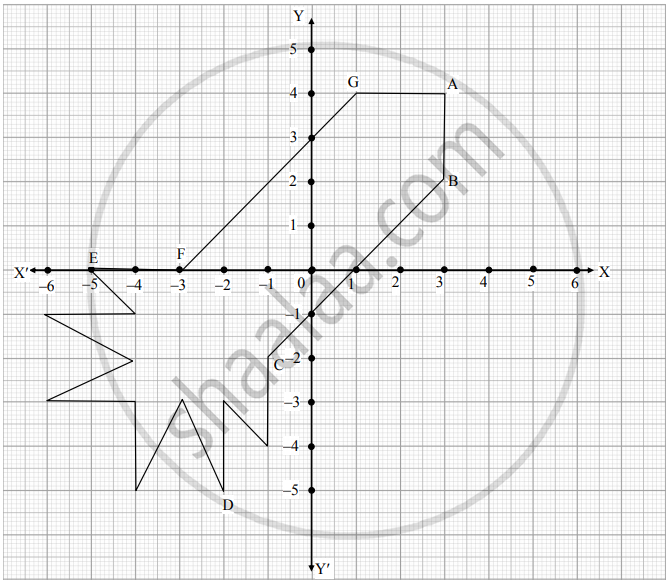Advertisements
Advertisements
Question
Prove that the points (0, 0), (5, 5) and (-5, 5) are the vertices of a right isosceles triangle.
Solution
The distance d between two points `(x_1, y_1)` and `(x_2, y_2)` is given by the formula
`d = sqrt((x_1- x_2)^2 + (y_1 - y_2)^2)`
In an isosceles triangle there are two sides which are equal in length.
By Pythagoras Theorem in a right-angled triangle, the square of the longest side will be equal to the sum of squares of the other two sides.
Here the three points are A(0,0), B(5,5) and C(−5,5).
Let us check the length of the three sides of the triangle.
`AB = sqrt((0 - 5)^2 + (0 - 5)^2)`
`= sqrt((-5)^2 + (0 - 5)^2)`
`= sqrt(25 + 25)`
`AB = 5sqrt2`
`BC = sqrt((5 + 5)^2 + (5 - 5)^2)`
`= sqrt((10)^2 + (0)^2)`
`= sqrt(100)`
BC = 10
`AC = sqrt((0 + 5)^2 + (0 - 5)^2)`
`= sqrt((5)^2 + (-5)^2)`
`=sqrt(25 + 25)`
`AC = 5sqrt2`
Here, we see that two sides of the triangle are equal. So the triangle formed should be an isosceles triangle.
APPEARS IN
RELATED QUESTIONS
If the points A(k + 1, 2k), B(3k, 2k + 3) and C(5k − 1, 5k) are collinear, then find the value of k
On which axis do the following points lie?
Q(0, -2)
Find the ratio in which the point (2, y) divides the line segment joining the points A (-2,2) and B (3, 7). Also, find the value of y.
Prove that the points (4, 5) (7, 6), (6, 3) (3, 2) are the vertices of a parallelogram. Is it a rectangle.
Show that the points A (1, 0), B (5, 3), C (2, 7) and D (−2, 4) are the vertices of a parallelogram.
If p(x , y) is point equidistant from the points A(6, -1) and B(2,3) A , show that x – y = 3
Find the coordinates of the midpoints of the line segment joining
P(-11,-8) and Q(8,-2)
Find the area of quadrilateral ABCD whose vertices are A(-5, 7), B(-4, -5) C(-1,-6) and D(4,5)
The perpendicular distance of the P (4,3) from y-axis is
If the points A(−2, 1), B(a, b) and C(4, −1) ae collinear and a − b = 1, find the values of aand b.
Write the distance between the points A (10 cos θ, 0) and B (0, 10 sin θ).
If x is a positive integer such that the distance between points P (x, 2) and Q (3, −6) is 10 units, then x =
If the centroid of the triangle formed by (7, x) (y, −6) and (9, 10) is at (6, 3), then (x, y) =
The length of a line segment joining A (2, −3) and B is 10 units. If the abscissa of B is 10 units, then its ordinates can be
Find the coordinates of point A, where AB is a diameter of the circle with centre (–2, 2) and B is the point with coordinates (3, 4).
The point at which the two coordinate axes meet is called the ______.
Point (3, 0) lies in the first quadrant.
The distance of the point (3, 5) from x-axis (in units) is ______.
Ryan, from a very young age, was fascinated by the twinkling of stars and the vastness of space. He always dreamt of becoming an astronaut one day. So, he started to sketch his own rocket designs on the graph sheet. One such design is given below :

Based on the above, answer the following questions:
i. Find the mid-point of the segment joining F and G. (1)
ii. a. What is the distance between the points A and C? (2)
OR
b. Find the coordinates of the points which divides the line segment joining the points A and B in the ratio 1 : 3 internally. (2)
iii. What are the coordinates of the point D? (1)
